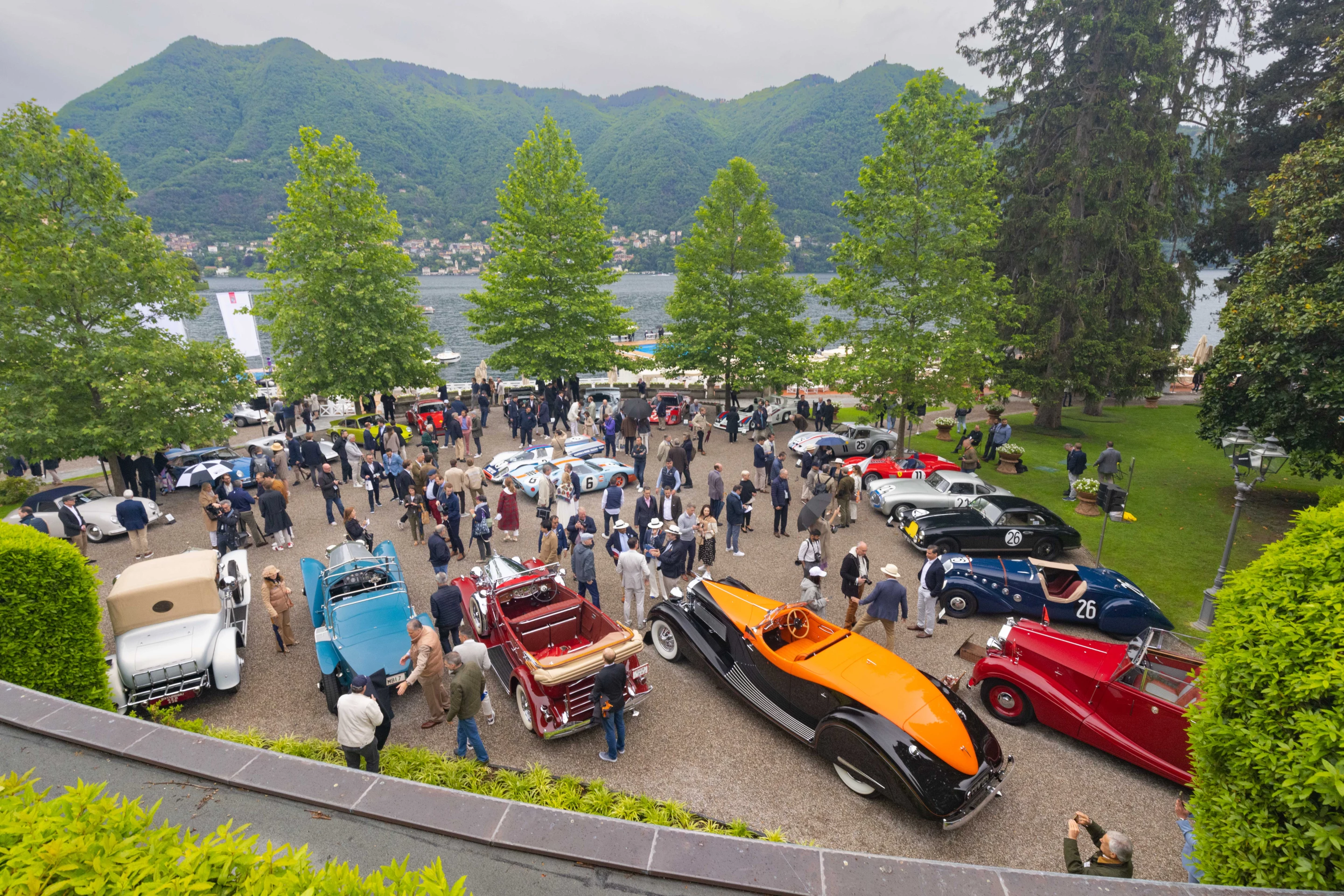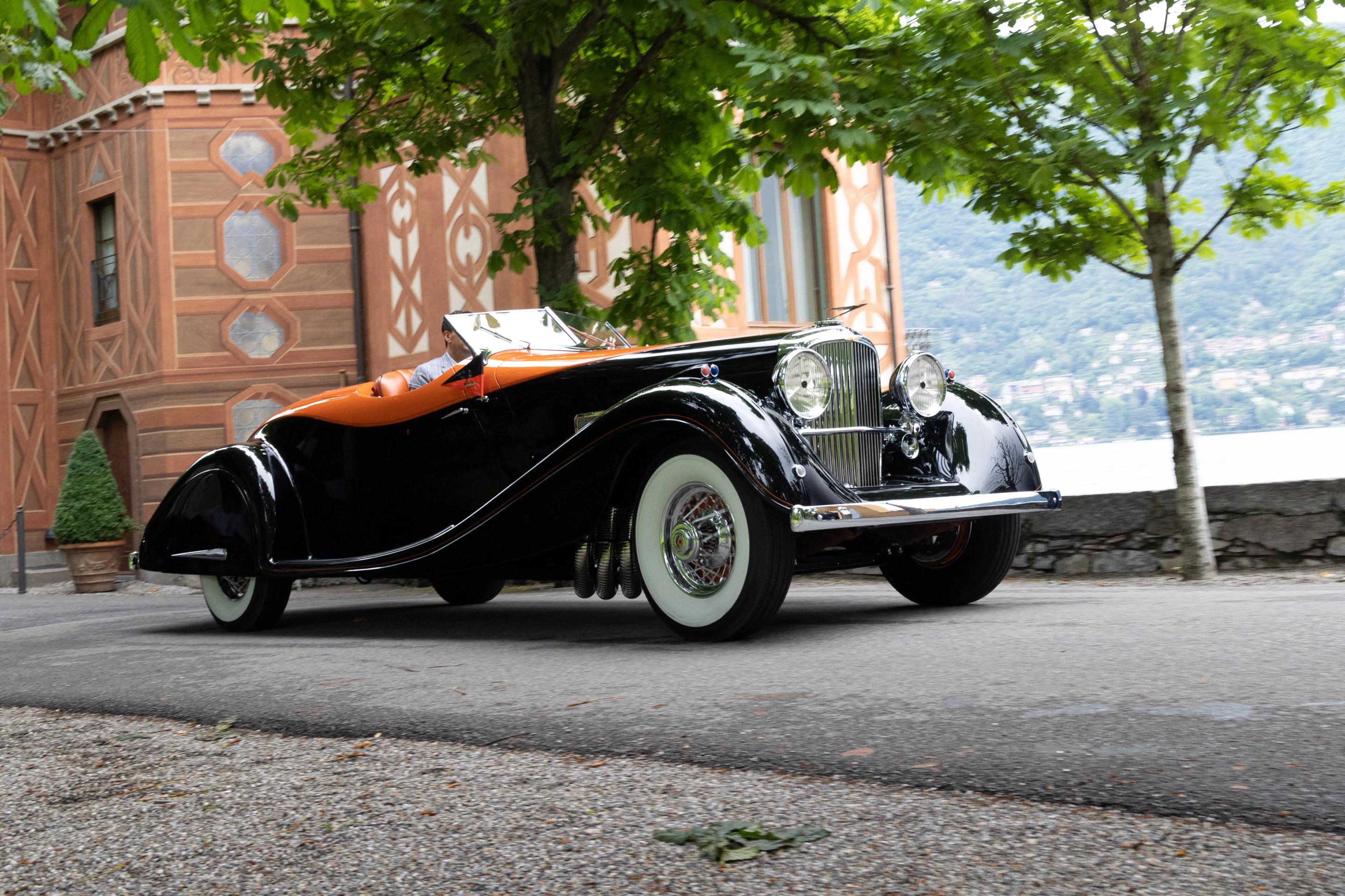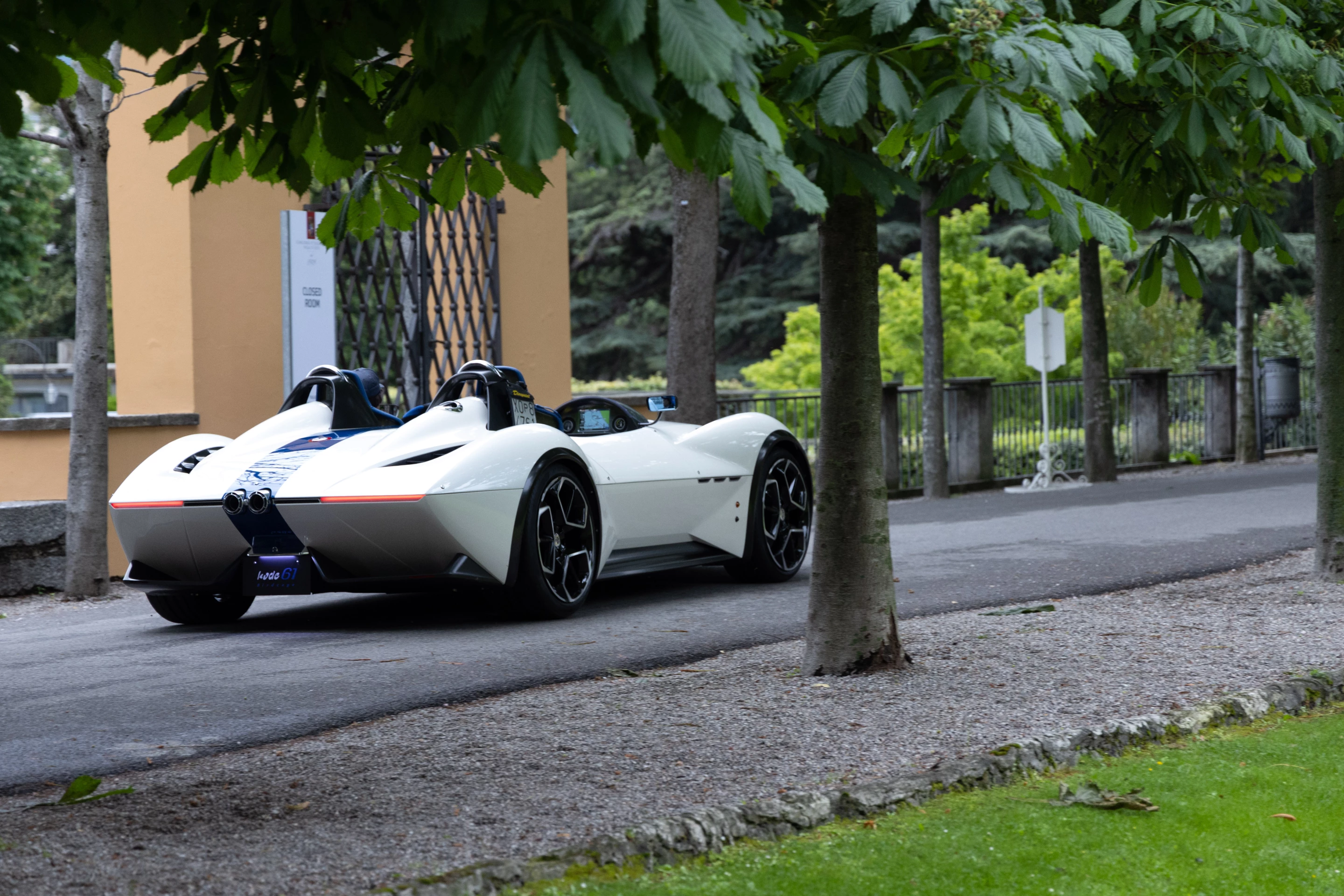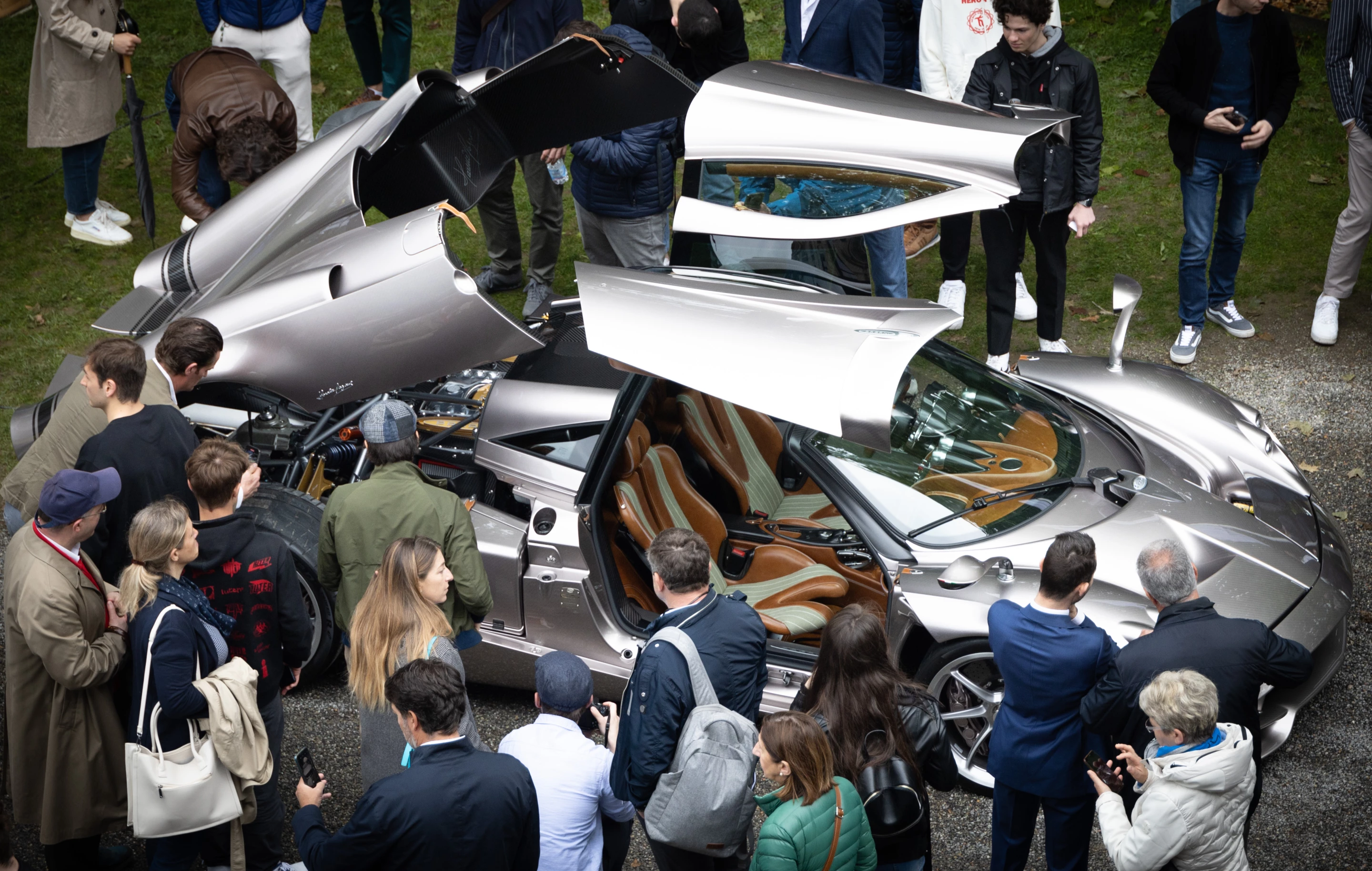An American car has won the prestigious Concorso d’Eleganza Villa d’Este, the world's oldest and most traditional automotive concours.
The winning Duesenberg SJ is symbolic in so many ways – it is the very last of the 481 hyper-exclusive Duesenbergs built (most during the Great Depression), and one of the most extravagant two-seater coupes you'll ever see, with a gargantuan English body built on an American motor/chassis for the Maharaja of Indore in India.
By the time it was finished by coachbuilder J. Gurney Nutting in London in 1937, Japan had invaded China and wealthy Indians were relocating to safety in case India was next, so the car was sent to one of the Maharaja's mansions in California. Once war had finished, it returned to India and spent several decades there, appearing in movies and being so recognizable as the conveyance of the Maharaja, it was fitted with taxi-like "occupation lights" to signify whether he was in the car or not – in order that the public did not prostrate themselves by the roadside unnecessarily.

After many decades it returned to America for a third time to become part of the collection of General William Lyon, the American Air Force chief who parlayed his organizational expertise into building an airline, then into building Orange County's orange groves into suburbia (his construction company built more than 100,000 family homes) becoming one of the most visible captains of industry in post-WW2 America.
The Lyon's family car collection is one of the world's largest and most valuable. This L.A. Times article from 1987 reports William Lyon buying 82 select automobiles from William F. Harrah's Las Vegas Casino Collection for US$28.8 million, doubling the value of his collection (at that time) in the process. One of those cars was a one-of-six Bugatti Royale – later in 1987, another of the closely-held Bugatti Royales sold for $9.8 million at a Christie's auction in London, a world record price for an automobile that stood for nearly two decades. The record it broke was $8.7 million, which had been achieved on the only other occasion that a Bugatti Royale had ever been offered at a public auction.

Bugattis weren't Bill Lyon's automotive passion though – Duesenbergs were, and although the collection contains many Duesenbergs, this car seems to take pride of place whenever the collection has been glimpsed by the public. There are regular exhibitions of parts of the car collection at the Lyon Air Museum in Orange County – the museum William Lyon founded to display his collections of aircraft, military aircraft, military vehicles, automobiles, motorcycles ... ad infinitum.
The car remains in the Lyon family today, with Rob Lyon picking up the trophy at Villa d'Este and the winning of this award automatically makes the car a finalist in the Peninsula Classics Best of the Best Award – the defacto world championship for concours cars which puts the winners of eight of the world's most important concours events in front of a dream team of designers once a year – and names a winner. Hence although the Lyon family has never won at Pebble Beach, there may be another path to the goal.
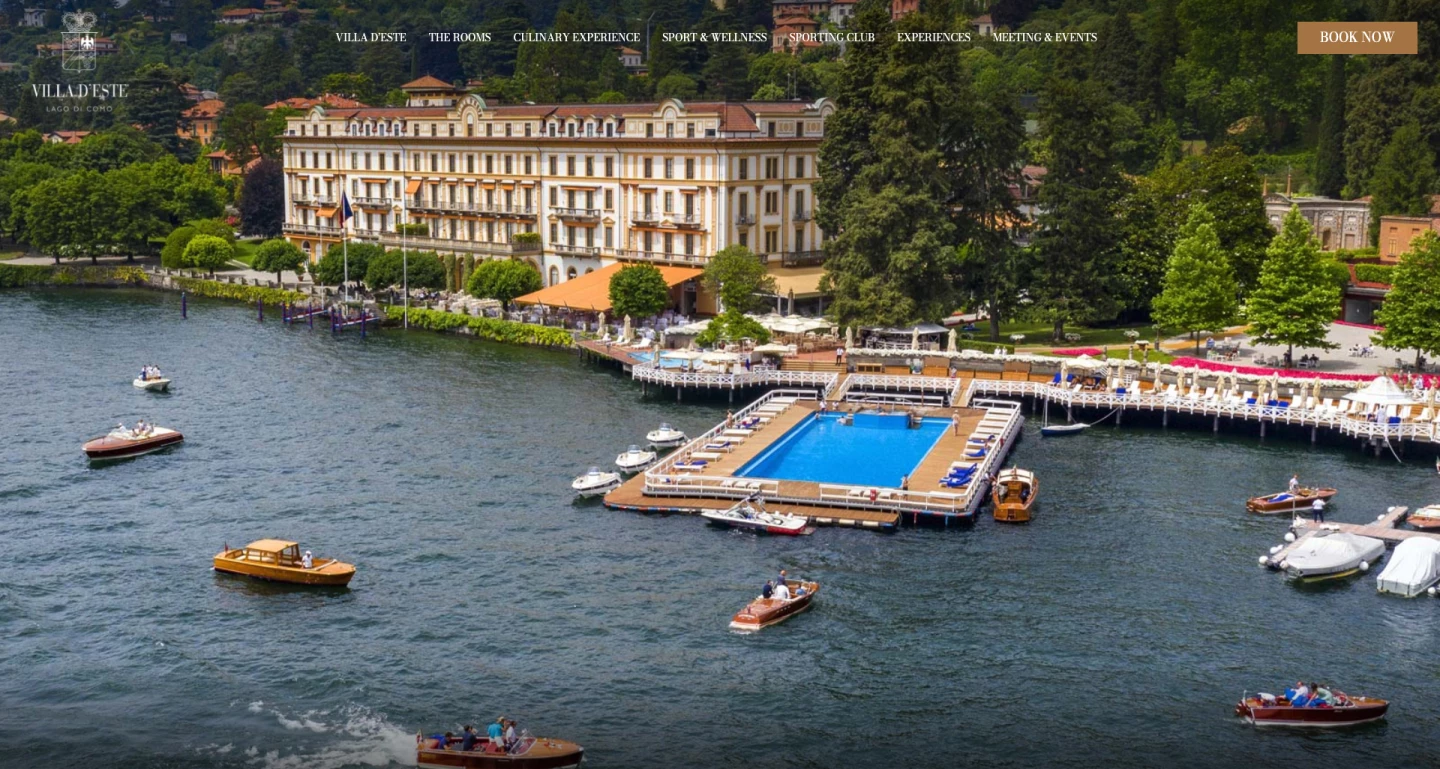
As previously mentioned in this article, it is believed to be the first time in the event's history that an American car has won at Villa d'Este since it began in 1929. We tried to check, but records of prior winners of the Concorso d’Eleganza are seemingly impossible to procure. We researched the award as far back as we could and could only get back to 2002 before it became too complex to call.
The event has a chequered past, and although it is known that Concorso d’Eleganza Villa d'Este was first run in 1929, which years it has been subsequently run, and which awards are the equivalent of today's accepted "Best in Show as awarded by the jury," make it impossible to assemble a matching set prior to 21 years ago.
In 2002, BMW joined as both the major sponsor and the organiser of the Concorso, and administrative rigour has been applied since – we've asked BMW if it can put together a prior list and the media department has bravely undertaken the task. We'll let you know if it can untangle the spaghetti.
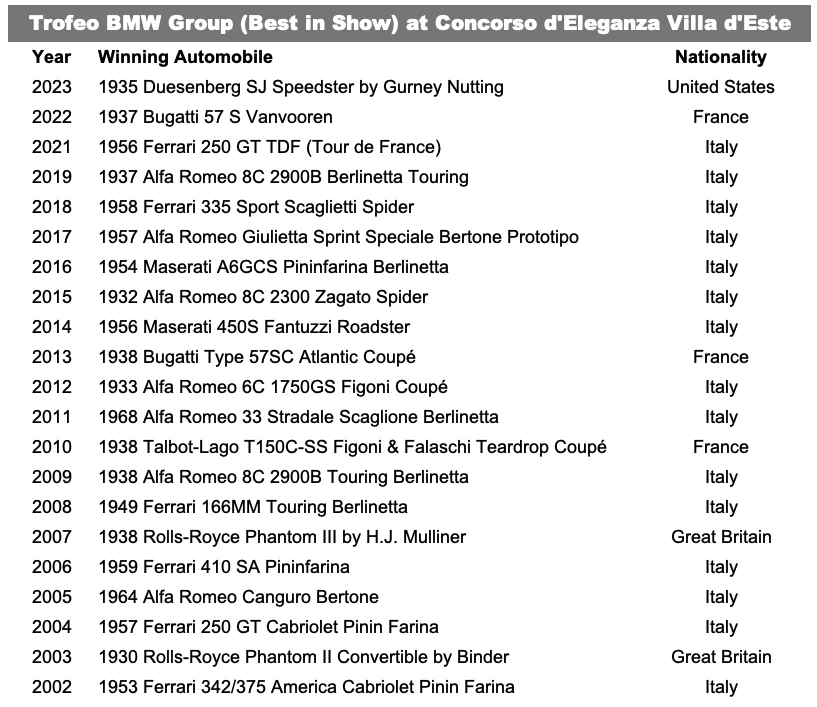
The win is significant, because although it isn't necessary for a car to be Italian to win at Villa d'Este, the limited field, close proximity to Italian collectors, the distinctly Italian atmosphere and the raw data all suggest there's a home ground advantage – the statistics from the 20 prior years show Italian cars have won 15 times (75%), France three (15%) and Great Britain two (10%). Alfa Romeo has won more times than any other marque with seven wins, Ferrari has six wins, Maserati, Rolls-Royce and Bugatti have two wins each and Duesenberg and Talbot-Lago have one win each.
Now that's not to say that Villa d'Este is alone in statistical anomalies. Do some analysis on the winning marques at the Pebble Beach Concours d'elegance and you'll find that Bugatti and Mercedes-Benz have nine wins apiece, Duesenberg has seven wins, Rolls-Royce five, Packard (4), Alfa Romeo (3), Daimler (3), Delage (3), Isotta Fraschini (3), Jaguar (3), Bentley (2), Chrysler (2), Horch (2), Pierce-Arrow (2), Voisin (2) and a host of marques have won it once ... with one of those being Ferrari.
For those with knowledge of the collector car marketplace, it might be difficult to comprehend that fact – Ferrari has won "Best of Show" at the Pebble Beach Concours d'Elegance only once since 1950.
Ferrari accounts for seven of the 10 most valuable cars ever sold at auction, more than half of the top 100 most valuable automobiles ever sold at auction and the Prancing Horse marque is so utterly dominant that it also accounts for roughly half of the top 1,000 too – against thousands of other car manufacturers.
Ferrari's domination of the collector car marketplace is ridiculously overwhelming and it is hard to argue that the same criteria involved in judging concours events doesn't have a correlation with the value of a car and there is also no doubt that the world's most dominant collector car marque is statistically underrepresented at the world’s most important concours event. Ferrari, by the way, does not make cars that are ugly, over-produced, slow, and they don't make cars that make sounds that are unpleasant – they are not in any way deficient.
In seven years of the Peninsula Classics Best of the Best award, Ferrari has triumphed three times.
Coppa d‘Oro Villa d‘Este: the People's Choice Award
There are two main awards at Concorso d’Eleganza Villa d’Este each year. The "best in show" by the judges is the main gong, winning a place in the Peninsula Classics Best of the Best Award final, and the Coppa d‘Oro Villa d‘Este: the "best in show" by public referendum.
It's worth noting that in the 15 years of available records for Concorso d’Eleganza Villa d’Este, the public and the judges have only agreed three times. One of those rare occasions was when fashion icon Ralph Lauren entered his stunning black, one-of-three Bugatti Type 57 Atlantic at Villa d'Este and the scene is captured in the video above. There is no mystery why it won.
The other two times were both related to almost identical cars, both Alfa Romeo 8C 2900B Berlinetta Tourings. The first belonged to Jon Shirley, the former President and COO of Microsoft, and the car swept all before it winning four awards on the day in 2009. The second was in 2019 when David and Ginny Sydorick's 1937 Alfa Romeo 8C 2900B Touring Berlinetta won both and then went on to take out the Peninsula Classics Best of the Best Award.

This year the Coppa d‘Oro Villa d‘Este went to a 1961 Ferrari 250 GT Spyder California owned by Jonathan Hui's Keybridge Collection which is partially based in Hong Kong and partially based in London.
The win further illustrates the fiscal dedication required to win a major award at an event such as Villa d'Este. There was a time when the Ferrari 250 GT California Spyder was the world's most valuable automobile.
In May 2008, British DJ Chris Evans paid EUR €7,040,000 (US$10,894,900) for a black 1961 Ferrari 250 GT Spyder California that had been owned for 25 years by Academy Award winning actor James Coburn. The car was purchased by Coburn when he and Steve McQueen went into Brussels during the filming of the movie, The Great Escape in 1961.
Coburn bought it 10 minutes after first seeing it at the famed Garage Francorchamps and loved the car dearly for 25 years before selling it in 1986 when his health began to decline. It was the first car to sell at auction for more than $10 million and it is a sign of the times that exactly 15 years later, the $10.9 million price tag doesn't feature in the top 50 car prices.

Like all California Spyders, the Ferrari that won Coppa d‘Oro Villa d‘Este had some delectable provenance. Its first owner was prodigiously talented French writer Françoise Sagan, who had a smash hit with her first novel Bonjour tristesse while she was still a teenager followed by a string of bestsellers. She is best known for the quote, “whisky, gambling and Ferraris are better than housework”, which we feel might have swayed the public vote in favour of the car. Just to put a fine point on the precocity of this writer, she wrote a novel when she was 17-years-of-age, that earned a place in Le Monde's 100 Books of the Century. The quote characterised Françoise Sagan's life, which was dramatized in the movie, Sagan.

In addition to the Concorso-winning Ferrari 250 GT SWB California Spyder, the Keybridge Collection comprises some 30 cars, being primarily Paganis, Porsches and Ferraris, but with some additions, such as a McLaren F1 (restored to new condition by McLaren Special Operations), a McLaren F1 GTR Longtail (converted for road use by Lanzante) and a McLaren Senna.

Then there's three Pagani Huayras (a Codalunga, R and a Roadster) and four Zondas (an original, a Roadster F and two one-offs), five Porsches (Lanzante Porsche 930 Tag Turbo, Carrera GT, 911 Carrera RS 2.7, 911 GT1 Straßenversion 996 and a 911 GT2 993), eight Ferraris (a 250 GT SWB Competizione, a 275 GTB/4, 288 GTO, 599 GTO, 599 XX, F12 tdf, Monza SP1 and a Monza SP2), a Mercedes-Benz CLK DTM AMG Cabriolet, a Mercedes-Benz CLK GTR Straßenversion, a Nissan Skyline GT-R NISMO 400R, a Bugatti EB110 GT, and an Automobili Amos Lancia Delta Futurista.
Now here's the fascination of this pastime of car collecting. Quite clearly there is no shortage of capital available to the Keybridge Collection yet in researching this article we realised that this very same car took a first in class at Concorso d'Eleganza Villa d'Este in 2003, just after it had been subjected to a rotisserie restoration at the fabled Carrozzeria Nuova Rinascente of Dino Cognolato in Vigonza, Italy. Exactly two decades later, it repeated the feat on the same restoration. It hasn't been refreshed. Bravo Dino!
The most beautiful engine sound

A new and very popular award was added to the proceedings this year in the form of the Trofeo Il Canto del Motore - an official award for "the most beautiful symphonic engine sound."
Not surprisingly, most participants fancied their chances until they realised they were up against a Porsche 917 K, which had a distinct advantage thanks to a competition exhaust system and a razor-sharp 12-cylinder boxer engine.

For authenticity’s sake, the organizers brought in opera singer Jonas Kaufmann to help decide the winner and present the prize. Christophe d’Ansembourg campaigns the 917 K across Europe and needed little encouragement to thrill the crowds with the blood-curdling battle cry of a working Porsche 917 K race car.
Just for the record, Porsche’s 917 K is an ultra rare and much sought-after beastie and if you fancy making music like this one does, it’ll probably cost you a lot more than $10 million. The last one to sell at auction was Jo Siffert’s car that played a role in Steve McQueen’s “Le Mans” movie, fetching $14,080,000 at Gooding & Company’s official Pebble Beach auction in 2017. The car that won the fictional race in the same movie went to auction at RM Sotheby’s in 2021 with an expectation of $16.0 to $18.5 million but failed to make reserve and was passed.
The first prototype of an iconic sports car

The Porsche 901 and all its descendants represent one of the most distinctive, important and pure bloodlines in the history of the automobile, and this car is the very first prototype - the first car in an iconic dynasty that includes the 911, 930, 964, 993, 996, 997, 991 and 992 families with all their Carrera, Targa, Turbo GT2 and GT3 variants.
The longevity of the family this car began in no way has detracted from its sporting prowess either - descendants won the Targa Florio, 24 Hours of Daytona, 24 Hours of Le Mans, and the World Championship for Makes (the World Sportscar Championship at the time) four times consecutively from 1976 to 1979.
Research shows that although the number of 911s produced is now well past a million in number, more than 70 percent are still ready to drive today, and can consistently be found at the top of quality rankings such as the “Initial Quality Study” from the US market research institute J.D. Power.

This car was not the one shown to the public on 12 September 1963, but it is the car that half of England went to see at the Earls Court Motor Show in October 1963 and it was the toast of Europe when it starred at the Salon Internationale de l´auto Genève (Geneva Auto Show) in March 1964.
Although it was originally built by Karmann in August 1963, it was fitted with a non-running mocked-up engine until May 1964 and was then driven extensively by the Porsche engineers who brought the concept to life, with Ferdinand Piëch in particular driving this car for many thousands of kilometers during development, then personally owning it until September 1965.
The car changed hands several times before being purchased after an accident by Alois Ruf, the founder of a closely related family dynasty (RUF Automobile), and gifted to his son in 1969. Alois Ruf Jr. is now the chairman of the company, and recently gave the car a two year nut-and-bolt restoration before bringing it to Villa d'Este for this concorso.
In terms of historical gravitas, this automobile is quite possibly the most significant of any car we will see at a concours this year. In the century of the automobile, a significant poll set out to determine the Car of the Century, in which the 911 placed fifth, behind the Ford Model T, Mini, Citroën DS and another relative (the Volkswagen Beetle). It was the highest placed sportscar and highest place premium car. As the first member of such a significant family, this is a truly priceless automobile!
The Fast And The Formal: Pre-War High Speed Luxury

The winning 1933 Chrysler Custom Imperial CL in Category A came from the Jack Boyd Smith Jr. Collection. Jack is relatively new to car collecting but he's taken to it quite convincingly. He attended his first Pebble Beach Concours d’Elegance just a decade ago in 2013. He attended the accompanying auctions and spotted the car that would become his first full restoration and, ultimately, Pebble Beach entrant: a 1933 Packard Twelve Coupe that was one of five produced, and two extant.
Twelve months hence, the 1933 Packard found its way onto the show field of the 2014 Pebble Beach Concours d’Elegance after a full LaVine Restorations rejuvenation. In the car's first outing, it secured a Second-in-Class award behind a custom Chrysler Town Car built specifically for Walter P. Chrysler’s wife. Excited, but hungry for more, Jack left a very successful first outing at the ever-challenging Concours on the water with a singular goal – Best-in-Class.
In 2015, Jack accomplished this goal with a stunning and rare 1934 Packard Twelve Convertible Victoria with custom interior by Dietrich, again wearing a fresh restoration by LaVine Restorations. Over the past six years, Jack's cars have won several Best-in-Class awards at Pebble Beach, along with numerous awards around the world, and Concorso d'Eleganza Villa d'Este is now on the list too.
Trofeo Automobile Club Como - for the car driven from farthest away

People come from many countries to attend Concorso d'Eleganza Villa d'Este and there has always been a prize for the entrant that has driven their car the greatest distance. This year's winner was James B. Sprague of Washington, DC (USA) and although we don't think James drove the whole way, we suspect he clocked up a few miles getting there because he has been regularly popping up around the world and winning awards at major concours with this car for more than a quarter century.
James' Open Two Seater 1937 Alvis Speed 25 was a definite supercar in its day and its body was built by one of the traditional English coachbuilders - Offord & Sons, which had been a supplier of carriages to the British Royal Court since 1791. Like many coachbuilders from the horse drawn era, Offord and Sons began building automobile bodies from the beginning of the horseless carriage era circa 1895.
Alvis built 391 Speed 25s between 1936 and 1939 and this gorgeous sports car was commissioned in May 1938 by Fredrick Arthur Thomas, the president of the Institute of Consulting Engineers. It spent WW2 on the island of Jersey under German occupation, returning to England in 1956 and was then imported to the United States in 1962.
Acquired by Sprague in 1995, it has always been well used, completing a 1,000-mile New England tour in 1996, undergoing a nut-and-bolt restoration in 2001 and being shown at Pebble Beach in 2002 where it was awarded "Most Elegant Open Car". The car has been shown across the world in the subsequent two decades, and there's a picture of it on Wikipedia picking up a win at the Meadow Brook Concours in August 2005.
It again landed a second-in-class at Pebble Beach in 2015 and has appeared at several concours we're aware of in the United Kingdom, and it seemingly always gets driven when there's an appropriate venue. So bravo to James Sprague and family for the spirit in which it approaches the show car endeavour.
Now many stories on cars such as this Alvis, where artisans have crafted every single part, often have a line that goes "they don't make them like they used to", but that's not the case because Alvis Car Company has been revived and they're making continuation cars from way back when, just like they used to.
Like many of the other companies with a glorious back catalog (e.g. Jaguar, Aston Martin, Bentley, AC and Land Rover), Alvis is now making continuation models. Put simply, the Alvis offering is particularly appealing because there's a broad choice of models, you can get them with fuel injection and hence emissions-compliant, fully road-registerable and hence usable, and at around USD$350,000, they're not as expensive as the others.
A Century of the 24 Hours of Le Mans: Heroes of the most famous Race in the World

The 24 Hours of Le Mans has been the world’s most important car race since it began in 1923, and this year with the race celebrating its centenary, it was only natural that a class be framed to celebrate the cavalcade of sports cars that have competed in the race.

Our condolences to the judges who had to separate a winner for this class as the field of eight cars contained no less than FOUR cars that had actually won the world’s most important race, with one of them winning it twice … and in the end, none of those cars got the class win.

The four winners are the 1952 Mercedes-Benz 300 SL Coupé (1952 winner), 1959 Ferrari 250 Testa Rossa (1960 winner), 1968 Ford GT40 (1968 & 1969 winner) and 1976 Porsche 936/77 (1977 winner) … and the winner of the class was the 1962 Ferrari 250 GTO which finished fourth outright with a class win in the 1963 24 Hours of Le Mans, but won the 1964 Tour de France and is reportedly the best GTO ($70 mil).
The Trofeo dei Presidenti

Having a car that is near perfect and has won Le Mans twice and still not managing to win the Heroes of Le Mans Class must have been somewhat of a disappointment for Rob Walton. A consolation prize of sorts would have been the Trofeo dei Presidenti, which is voted on by the President of Concorso d’Eleganza Villa d’Este and the Chairmans of Pebble Beach Concours d’Elegance and Amelia Island Concours d’Elegance.
Rob Walton is better known as Samuel Robson Walton, Walmart heir, 18th richest person in the world, owner of the Denver Broncos, and the owner of one of the finest car collections known. The collection contains two Ferrari 250 GTOs, a Ferrari 250 GT SWB, a Ferrari 275 GTB Competizione Speciale, a Ferrari 250 GT LWB Zagato TdF, a Ferrari 250 Testa Rossa Spider, a Ferrari 250 LM Drogo long nose, a Porsche 935, a Maserati T61 Birdcage, a Maserati 450S, a Shelby Daytona Cobra Coupe, a Jaguar C-Type and unobtainium ad infinitum.
Design Award for Concept Cars & Prototypes
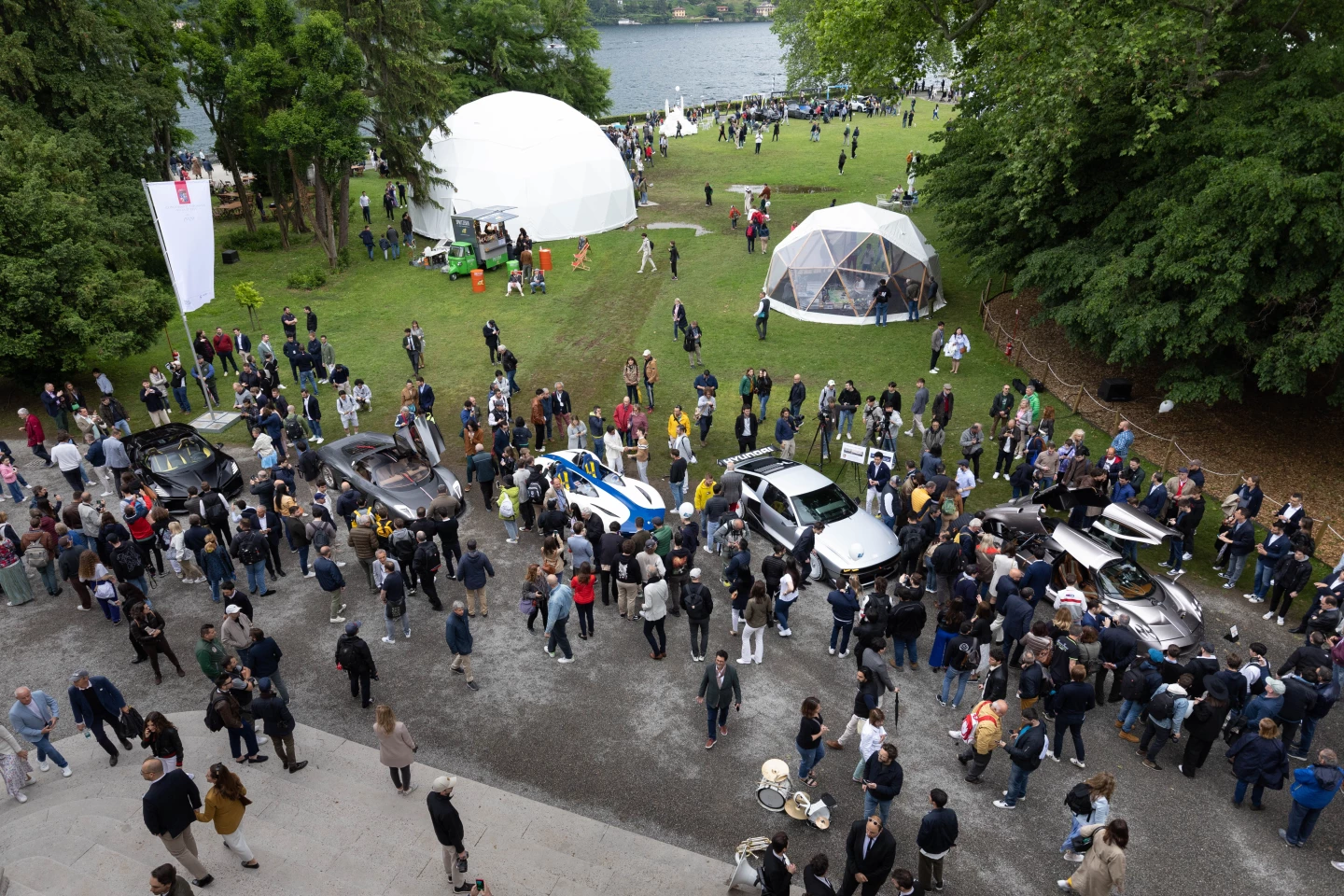
Each year at Concorso d'Eleganza Villa d'Este the public vote on a field of concepts and design studies, usually drawn from the previous 12 months, but sometimes there’s a world debut and that was the case with the Kode61 Birdcage by Japanese design house Ken Okuyama Design.

Okuyama may not be immediately known to readers, but he was the designer behind the Ferrari Enzo and was involved in the design of the Porsche Boxster, Porsche 911 GT1, Ferrari 599 GTB Fiorano, Maserati Quattroporte and Pininfarina's 75th anniversary concept car, the Maserati Tipo 61.

Okuyama obviously still has some unfinished business around the 1961 Maserati Birdcage Tipo 61 idea, as the Kode61 Birdcage again offered yet another update of the famous lightweight racing car from Maserati and will be produce in limited quantities. No price or details of the production quantities has been mentioned as yet.

One of the five cars in the Concept Cars & Prototypes Class at Concorso d’Eleganza Villa d’Este was Bugatti’s W16 Mistral Roadster. The car generated a lot of interest at “The Quail: a Motorsport Gathering” in Monterey last August when it was shown publicly for the first time.

The showing in Monterey was a potent demonstration of the power of Bugatti’s customer contact book because the limited edition (99 only) Black Mistral was shown along with a “sold out” notice and a $5.0 million price tag. That is, 99 people had put a deposit down in behind-closed-door showings, committing to buy one for USD $5 million.
It is a significant car because it is Bugatti’s final internal combustion engined car so the outing at picturesque Villa d’Este was really a public relations exercise for the influential automotive heritage celebration.

Competition for the premiere prize in the Concept Cars & Prototypes category at Villa d’Este was fierce, and this gorgeous Pagani Codalunga was victorious this year, being the first entry, and indeed the first car to come from Pagani's in-house special projects division, “Grandi Complicazoni.” The three-valve six litre V12 produces 840 hp at 5,900 rpm
The cost of doing business

We apologise if the mention of all this money seems a little crass, but we've been watching the cost of competing for a class award at a concours climbing for some time now and felt it was time to calibrate the costs in everyone's head. Just 14 years ago, we wrote about a new world record price for a car at auction of $12.1 million - a Ferrari Testarossa just like the one above fetched that amount. Then in 2011, another Testa Rossa pushed the record price to $16.4 million.
The cars at Villa d'Este this year were approaching perfection and there seems little doubt that the amount of money spent chasing that perfection grows exponentially each year. The setting has always been near perfect.
Be aware of what a privilege it is to witness an event such as this.










